Today, we’re reviewing the Waterrower A1 Home rowing machine. It’s important to note right off the bat that the rower is no longer available at major retailers or on the WaterRower website.
Based on the A1 page, they seem to market A1 rowing machines without the Home and Studio designations.
This is likely because there was very little difference between the Studio and Home versions, to begin with. The A1 Studio was an extra 2 inches off the ground with a height of 22” compared to A1 Home which sat at 20”.
If I remember right, an old version of the A1 Home used a dual-track frame, but in recent times both use the same monorail frame style. And of course, the two rowers use the same (A1) monitor. Hence all info but the dimensions (height) apply to both.
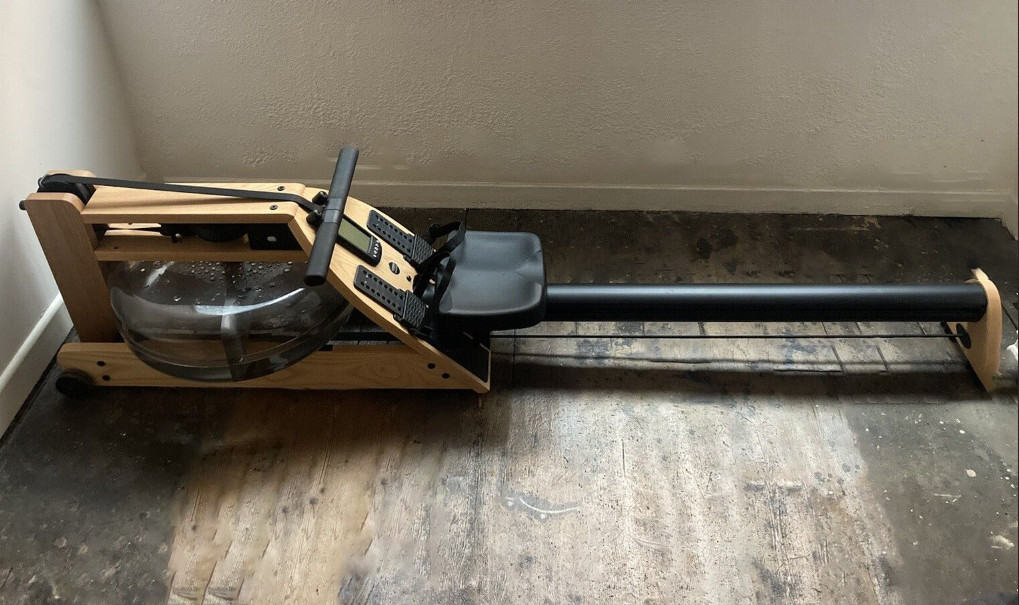
See how the seat glides across a single rail. Other Waterrowers use two rails.
Unfortunately, none of the A1 versions, least of all “Home”, are widely available at major retailers (where the best savings are found).
So, if space-saving isn’t a top priority, I’d recommend this WaterRower model. It’s higher quality (not in the budget line), provides the same workout, and can be found for around the same price since it’s available at retailers who offer free shipping.
If you’d prefer the A1 Home, it’s still available at some fitness retailers.
Resistance Type
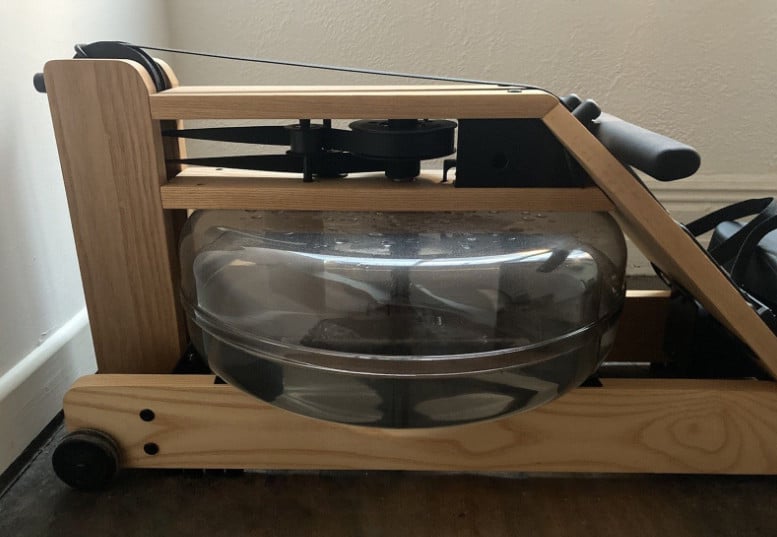
A1 rowing machines use water resistance via paddles (also known as a “water flywheel”) suspended in a tank of water to create resistance.
The “variability” of resistance on A1 rowing machines functions much like that of the air-resistance types. The amount of resistance the user feels is dependent on their rowing intensity.
If you row with low intensity, you feel low resistance. If you row with high intensity, you feel a lot more resistance. The ‘variable’ resistance offered on the A1 Home Rowing Machine is ideal for users of all fitness levels, from workout beginners to advanced athletes.
The main differences between air and water resistance are:
- Obviously, water is used rather than air on the A1.
- Water resistance makes a lot less noise compared to the air resistance flywheel.
- Water resistance rowers provide an overall smoother rowing motion.
You can also read my air vs. water rowing machine comparison article to learn more about each type.
Also, check out my article on rowing machine resistance types to learn about magnetic and hydraulic-piston rowers.
One of the best perks of water rowers is the smooth operation. Water resistance is often considered the smoothest of the rowing resistance types and WaterRower makes the best rowers of this type!
There is zero lag anywhere in the rowing stroke and the entire motion is smooth and seamless.
As mentioned in the ‘resistance types’ article above, the rowing experience can be further modified on A1 rowing machines by adjusting the level of water in the water tank.
One of my clients once said that she was rowing on a near-empty water tank for a few months without realizing it, then she filled up the water tank slightly and immediately felt the impact!
Although a user can hear splashing water in the A1 water tank, the sound is not distracting at all and you can watch TV while rowing. Waterrower users often say that they find the sound meditative!
Another common thing to hear is that workouts on the A1 are extremely challenging but also fun! Based on user feedback, the A1 doesn’t skip a beat when it comes to resistance strength and smoothness.
WaterRower A1 Monitor
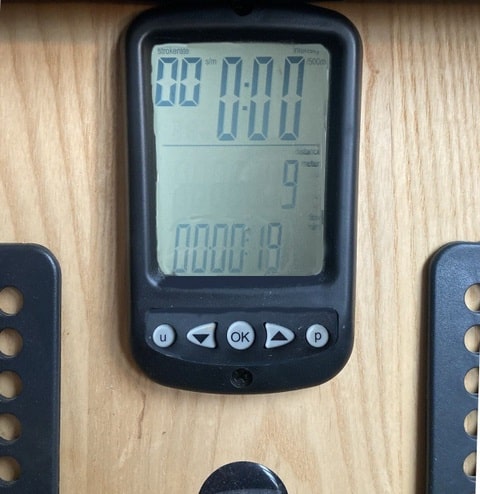
The WaterRower A1 Home Rowing Machine comes with an A1 multi-functional performance monitor. The S4 has more features but the A1 is hardly basic as monitors go. As discussed further down, the A1 rower can be equipped with an S4 if you decide you want the fancier monitor later.
The A1 monitor can track the following fitness data:
- Time
- Distance
- Intensity (Watts)
- Strokes per Minute
- Stroke Rate (500m split)
The tracked fitness data is displayed simultaneously on the A1 monitor in separate “windows”.
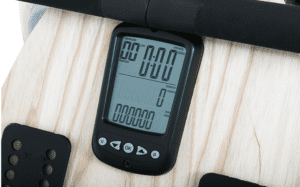
Here’s a quick overview of the windows on the main screen:
Intensity Window:
- Displays rowing speed in meters per second, miles per hour, 500-meter split, and 2K split.
- Also displays power watts and calories per hour.
Stroke Rate Window:
- Displays the number of strokes per minute.
Distance Window:
- Displays distance rowed in meters, miles, kilometers, or strokes.
- Can also display the distance remaining in the current workout when a predetermined distance for the workout is established.
Time Window:
- Displays time in hours, minutes, and seconds.
- Can also be programmed to display the time remaining.
WaterRower advertises the A1 monitor as a simpler version of the S4 monitor (monitor on higher priced WaterRowers). The term “simpler” can be defined by the reduced number of buttons and features.
The A1 monitor has a total of 5 buttons, 2 ‘select’ buttons, and 3 ‘navigation’ buttons. All are located directly below the face of the monitor.
Like the S4, there is no backlight feature, so make sure you have some light in the room. The monitor requires 2 AA batteries to operate, which are provided by WaterRower.
A1 vs. S4 Monitor
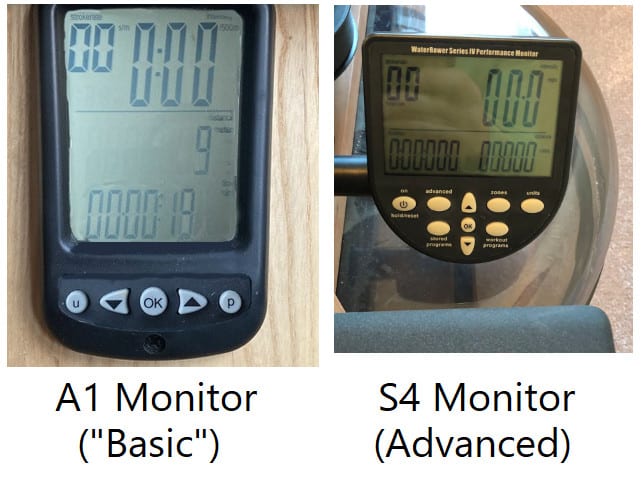
As mentioned in the introductory paragraph, one of the reasons A1 rowing machines are priced lower than other models is that the A1’s multi-functional performance monitor is missing a few features found on the S4.
Here’s a table comparing the features of the A1 and S4 performance monitors:
| MONITOR DESIGN | A1 MONITOR | S4 MONITOR |
|---|---|---|
| Basic Monitor Functions | ||
| Intensity Units (m/s, mph, /500km, /2km, watts, cal/hr) | YES | YES |
| Average Intensity Units | NO | YES |
| Distance Units (m/s, mph, /500km, /2km, watts, cal/hr | YES | YES |
| Zone Bar/ Settings (Intensity, Heart Rate, Stroke Rate) | NO | YES |
| Timed Workouts | YES | YES |
| Distance Workouts | YES | YES |
| Interval Workouts | NO | YES |
| Heart Rate Features | NO | YES |
| PC & Software Compatibility | NO | YES |
| Workout Program AutoStore | NO | YES |
| Workout Program AutoPreview | NO | YES |
| Advanced Monitor Functions | ||
| Manual Program Storage | NO | YES |
| Projected Duration (during distance workouts) | NO | YES |
| Projected Distance (during timed workouts | NO | YES |
| Ratio Display | NO | YES |
| Advanced Heart Rate Prognostics | NO | YES |
| 2km Test Prognostics | NO | YES |
| Tank Volume Setting | NO | YES |
| Total Distance Rowed/ Machine Firmware | NO | YES |
| Firmware Upgradable | NO | YES |
As the table shows, the A1 monitor is missing quite a few features when compared to the S4 monitor.
Some of the biggest differences on the A1 monitor are the absence of the PC & Software compatibility, heart rate monitoring features, and the ‘interval workouts’ feature.
However, these features are uncommon on most rowing machines, so it’s not too much of a surprise that a few features were left out of the A1 monitor. Also, the missing features are more of a luxury as opposed to a necessity.
WaterRower A1 Monitor Upgrade
As mentioned, I’ve seen a WaterRower A1 with an S4 Monitor. In fact, I’ve seen one for sale and one in person when training a client.
It’s confusing because the “A1” rowers are in part named after the monitor. It seems odd one would be sold with an S4. It could be that the one I saw for sale was a used machine that someone had previously upgraded.
In any case, if you decided you wanted an S4 monitor at some point, you can easily source and install one.
Comfort
The rowing motion on A1 rowing machines is very smooth, as expected!
The rowing motion is nice, from the moment you pull the handle to when you are fully extended. The seat glides with minimal friction or vibration thanks to the sleek aluminum monorail design.
As with other WaterRower models, the times I’ve used the A1 I felt consistent resistance throughout the entire rowing stroke with no lag. And the sound of water splashing in the tank… all I can say is, wow!
Comfort Features
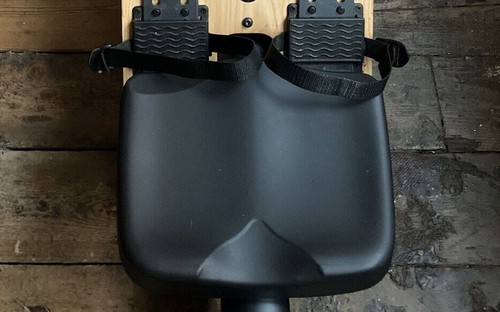
The WaterRower A1’s molded seat is padded and comfortable to sit on while rowing. It’s the same seat found on higher-priced WaterRower machines, which is very comfortable based on personal experience and other user comments.
The handle is durable and easy to grip due to its ergonomic design. It is also lightweight, making it a pleasure to use for short and long periods of time.
The footrests do a good job at securing your feet while rowing and the nylon straps can be quickly adjusted to secure or loosen your feet.
One of the biggest comfort features is the spacing between the footrests. The spacing on the WaterRower A1 is 8.0″ apart, compared to 5.5″ on the other WaterRowers.
The 5.5″ separation comes from how far a rower’s feet are spaced apart in a racing scull, but this is uncomfortable for most at-home users. WaterRower decided to make the separation more comfortable for regular users, so they increased it to 8.0″. Plus, the space needed to be wider for the monorail to fit between the footrests.
Storage
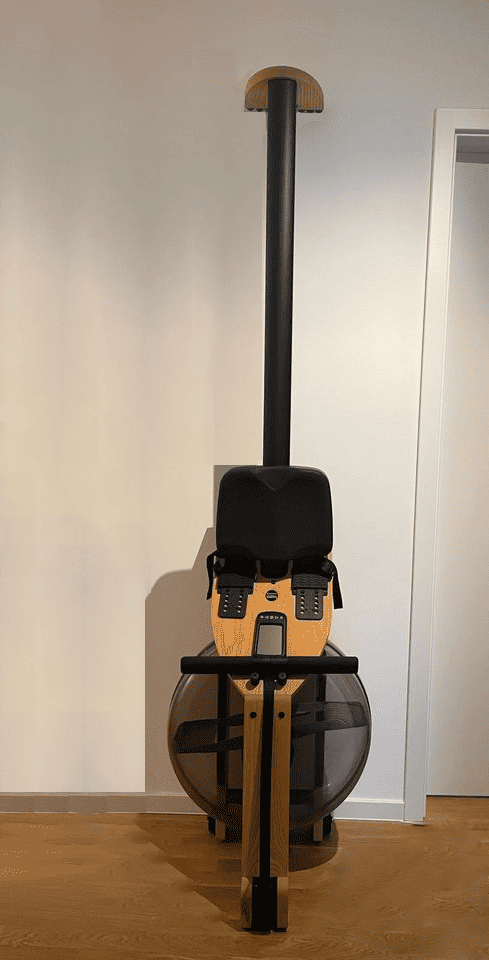
A1 rowers make up the space-saving WaterRower line. They take a lot of space while in use, but can easily be stored upright in just a few seconds.
A combination of the water flywheel being close to the wheels, the lightweight wooden frame, and some clever engineering, make standing up the rower effortless.
I can stand up the rower with one hand and I’m not even close to the strongest guy in the world!
While in “storage mode”, the rower’s footprint is equivalent to a dining room chair.
The dual caster wheels make it simple to move into the corner of a room or against the wall.
WaterRower A1 Weight Limit and Height Restrictions
According to WaterRower, the weight capacity is 275 pounds (125 kg).
The rower has a fairly long seat track and the seat has a movement length of close to 43 inches (109 cm). The seat track is similar in length to the other WaterRower models and based on previous research, users from children to adults as tall as 6’7″ have used this rower.
Based on the information I’ve gathered and historical data, if you’re taller than 6’7″, I would try out a WaterRower at a local retailer or call WaterRower to verify before making a purchase.
The lower-priced WaterRower A1 Home Rowing Machine has a few design modifications, which allows it to sell for less than other WaterRower models.
The modifications include a single monorail (as opposed to a dual monorail) and a rail stability rating of ‘medium’ (as opposed to ‘maximum’).
The maximum weight limit on the A1 is significantly less than the other WaterRowers (275 pounds [125 kg] compared to 1100 pounds [500 kg]). However, as long as the rower is under the maximum weight limit, the A1 will definitely hold up against the most vigorous workouts.
Although these areas of the WaterRower’s design are considered a downgrade, the overall build quality of the WaterRower A1 Home Rowing Machine is still excellent.
Check out the A1 Rower in the video below to see just how awesome this rowing machine performs!
WaterRower A1 Dimensions
- In-Use:
- 84.0″ x 21.0″ x 22.0″ (L x W x H)
- 213 cm x 53 cm x 56 cm
- Storage/ Upright:
- 22.0″ x 21.0″ x 84.0″ (L x W x H)
- 56 cm x 53 cm x 213 cm
- About the footprint of a dining room chair
- Weight:
- 117 pounds (53 kg) (with full water tank)
Warranty
- Frame: 5 years*
- Parts: 3 years*
*Requires completion of a registration form. Otherwise, the warranty is 1 year.
WaterRower A1 vs Other Models
Before I give my final thoughts on the WaterRower A1 Home Rowing Machine, I want to briefly compare it to other similar models.
Compared to other WaterRower models, those in the A1 line come with an A1 monitor (less fancy than the S4) and are meant to be mobile and space-saving in that you can easily stand them up to free floor space.
See below for more specifics:
WaterRower A1 vs Natural
A1 compared to the WaterRower Natural Rowing Machine:
The Natural model comes with a stronger frame to support more user weight and an upgrade of various components. The Natural model also comes with the S4 performance monitor. See my full Natural Rowing Machine review here.
WaterRower A1 vs Club and Oxbridge
A1 compared to the WaterRower Club Rowing Machine: The Club model is intended for commercial use and has a stronger frame and components to support the ‘abuse’ it’s going to receive from heavy usage. The Club model also comes with the S4 performance monitor. See my full Club Rowing Machine review here.
A1 compared to the WaterRower Oxbridge Rowing Machine: The Oxbridge model comes with premium Cherry hardwood and has a stronger frame to support more user weight and an upgrade of various components. Hardwood is the brand’s most popular frame design. The Oxbridge model also comes with the S4 performance monitor. See my full Oxbridge Rowing Machine review here.
WaterRower A1 Home Review: Conclusion
The WaterRower A1 Home Rowing Machine is a solid rowing machine overall. It’s a WaterRower, so you can expect an excellent rowing stroke and world-class quality!
Although it’s classified as a ‘home rowing machine’ don’t be fooled by the classification. The WaterRower A1 is as tough as nails and will stand the test of time!
If you’re looking for a rowing machine that provides a solid workout regardless of your fitness type, provides a realistic rowing motion, and is very durable, this is the model for you!
If you aren’t opposed to air resistance and want to track your rowing times more accurately, then I would suggest the Concept2. The Concept2 is used by Olympic Rowers for off-the-water training and has the most accurate monitor. You can use it to compare yourself to rowers from around the world, enter indoor rowing competitions, and follow along with many training programs.
Check out my complete Concept2 Model D review here.
I hope you enjoyed my WaterRower A1 Home Rowing Machine review! Please leave any questions in the comment section below.

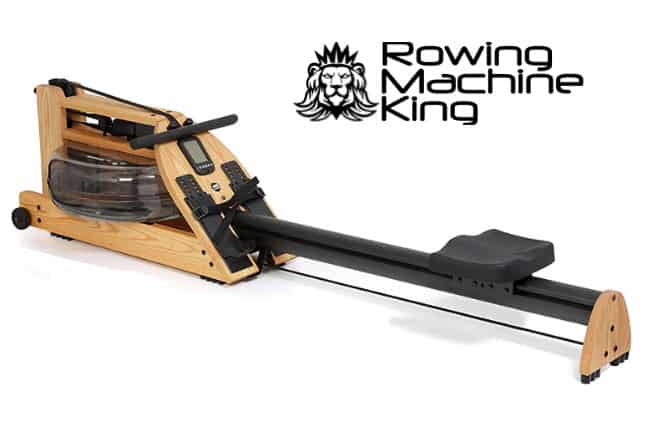
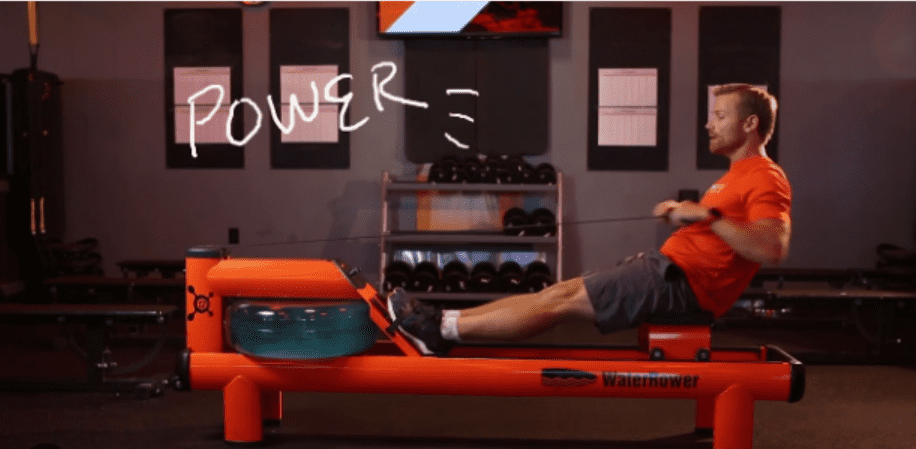
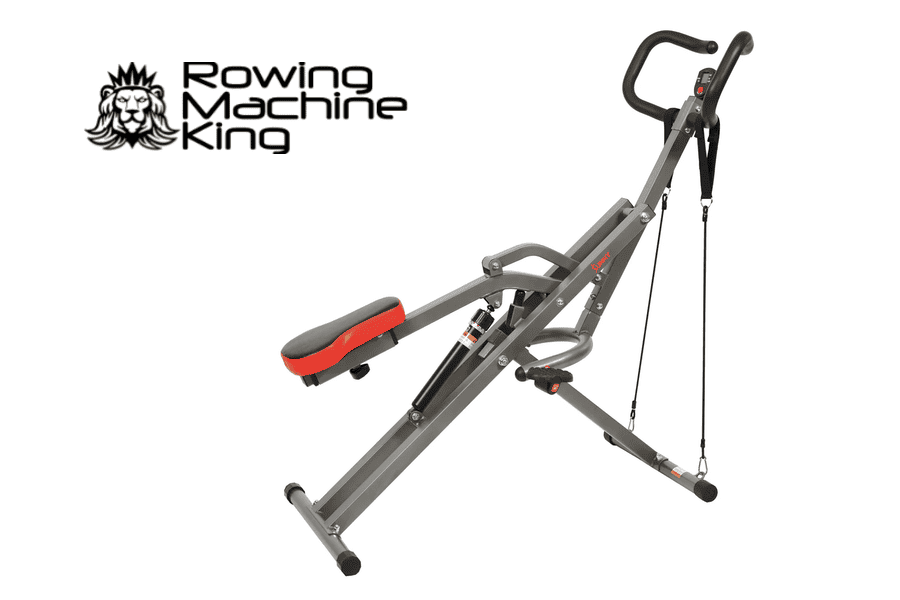
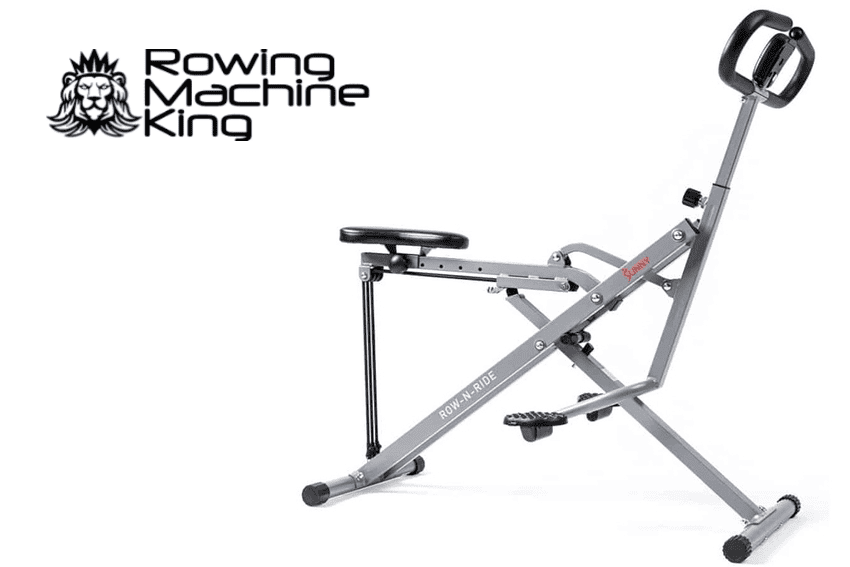
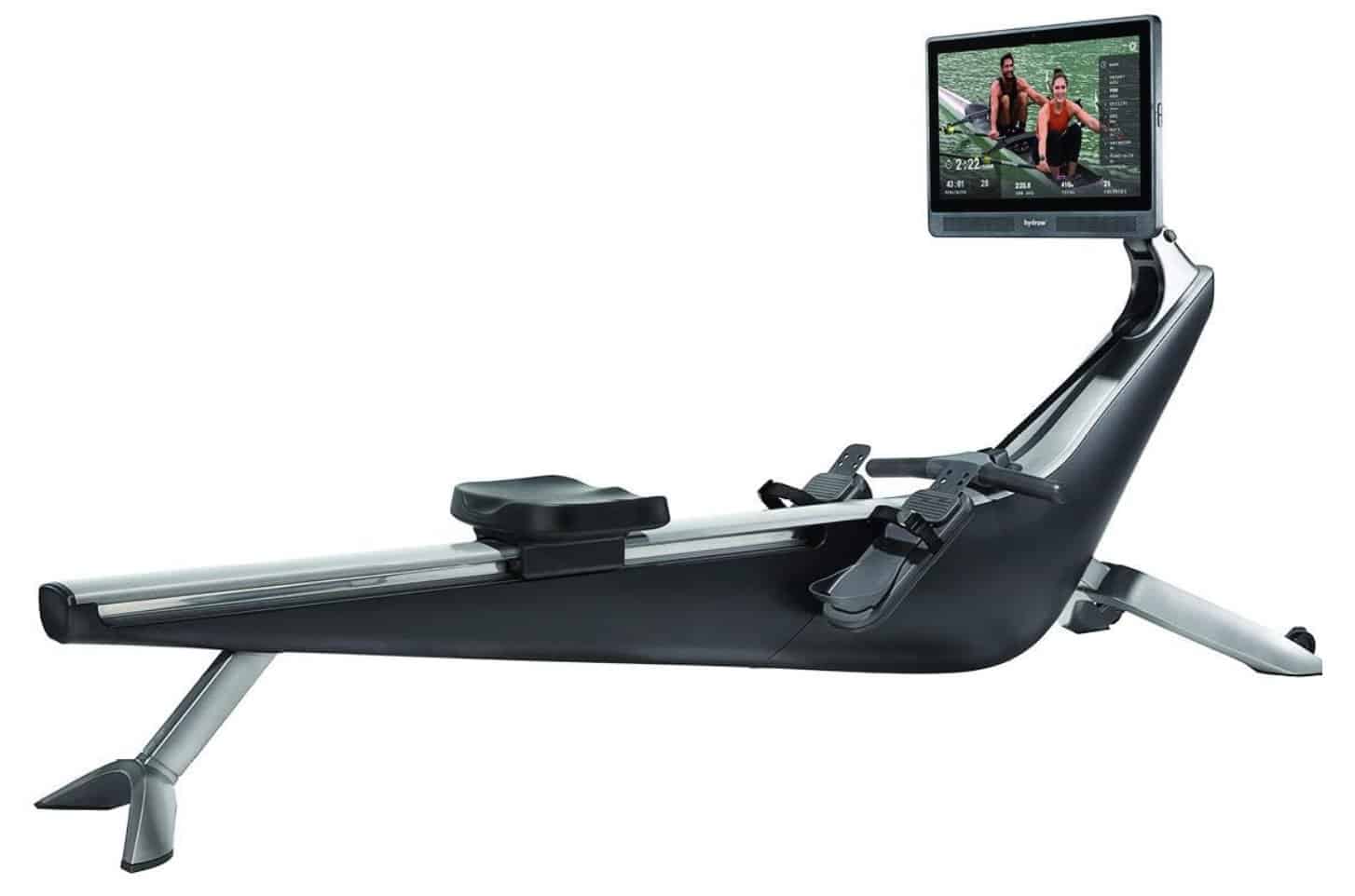
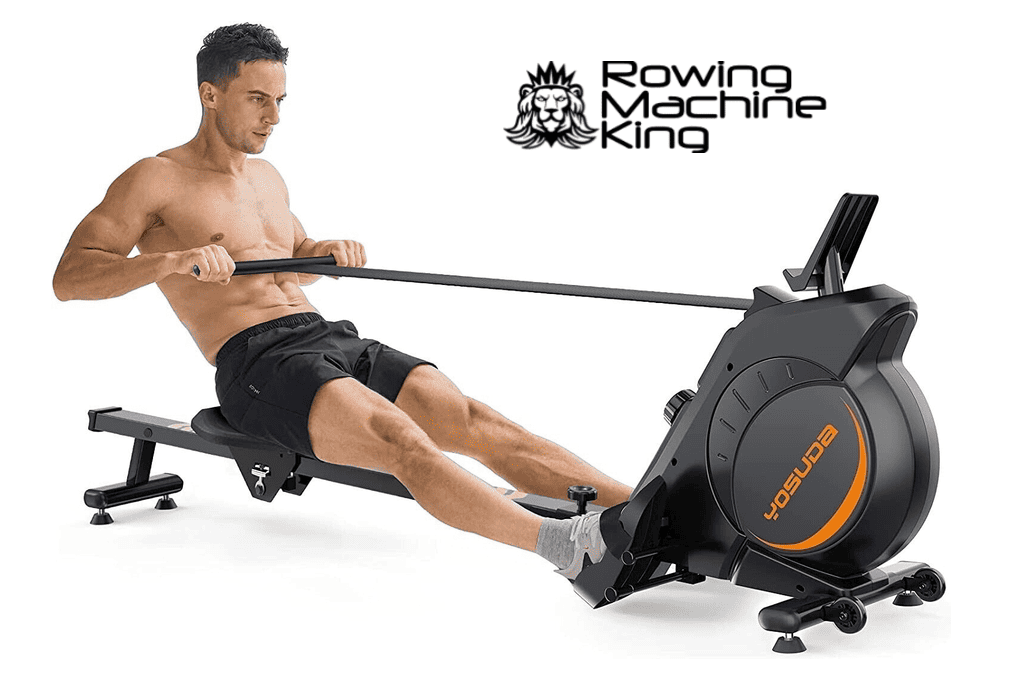
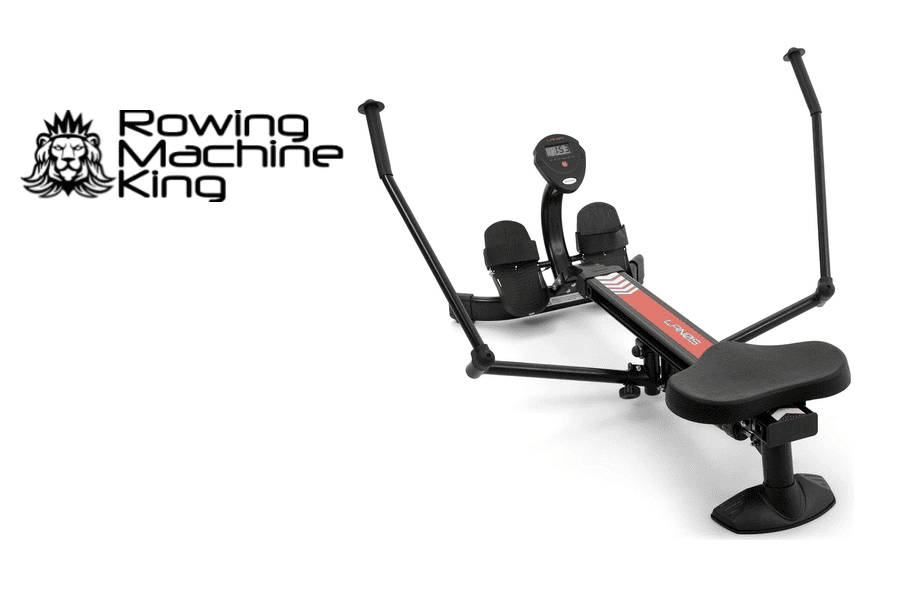
Just wondering whether there are any outdoor rowing machines I can put on my deck (covering them in inclement weather) that are recommended.
Just wondering whether there are any outdoor rowing machines I can put on my deck (covering them in inclement weather) that are recommended?
Hi Steve,
Water resistance rowers such as the WaterRower A1 have a small footprint when stood up so it can be stored inside if needed.
I don’t know if you want a rowing machine on your deck because of lack of storage indoors or you just want it there, but for rowing machines to use outside I would recommend any WaterRower or Concept2 rowing machine.
They’re heavy-duty and the finish on both machines make it ideal for outdoor use. I would cover it daily though to be honest with you – just to be on the safe side.
Do you want a rowing machine outdoors on your deck due to preference or necessity?
Edwin
Steve,
One thing to note, Concept2 rowers (Model D and E) take up very little space when taken apart in the frame – it literally takes 10 seconds to take apart and put together.
Edwin
Hi Edwin,
I have a few questions about water rowers, if you can help me out.
I am 38 and, since rupturing my Achille’s tendon several years ago I have gone up from 80kg to 102kg :(
So, before an heart attack comes knocking, I have decided to go back into shape. Given I work from home and I used to train for rowing competitions as a teenager, a rower sounds like the best option.
I should be able to train in my breaks and hopefully with the right tecnique.
Noise and size when folded rule out Concept 2 and Infinity, so I am deciding between WaterRower A1, Natural or the Firtst Degree Viking A2.
The Viking, which unfortunately is not widely reviewed, looks very much like a clone of the Natural, including the advanced monitor, but with a double tanks system which allows to empty or fill the tank by turning a knob, so perhaps less hassle (http://www.firstdegreefitness.com/shop/viking-ar-rower-copy/)
My questions are:
1) Resistance: is adsjusting resistance often important for aerobic training? In that case the Viking might have an edge (even though perhaps not the customer care and performance of a WaterRower)
2) Heart beat monitor: I really want this and the A1 doesn’t have it. Is there a big advantage monitoring heartrate with the rower monitor instead of simply using a separate heart monitor, which would cost me less than the price difference between Natural and A1?
3) Wattage: Does the A1 monitor display wattage for Tabata workouts?
4) Wife: I do I talk my wife into training too?? (ok, just joking, I’ll find a way :D )
Thanks so much for all the reviews, very informative and clear.
Aldo
.
Edwin: I had asked about the noise of a Concept2 and you recommended I look at Water Rower. Well, I did and found a dealer here in Charleston, SC and got a demo. The seat glides perfectly and the “swoosh” of the water is to a level that my downstairs neighbors won’t even know I have the rower until I tell them! I plan to buy Water Rower today. My wife is also excited about it and ready to join me in a rowing exercise program. Thanks again for the knowledge!
No problem Patrick, always glad to help! Like I said on the other post, let me know how it performs. I love getting feedback so I can give the best knowledge to my readers.
BTW Charleston is an awesome place! I have visited twice and left for a cruise from there 2 years ago.
Happy rowing!
Edwin
Does the A! water tank have to be drained for upright storage?
No, not at all!! No WaterRowers have to be drained to store upright. It actually is better to keep the water in, as it helps keep the rower stable.
Hi there, this is super useful thanks. We are thinking of either getting the A1 or the Natural, one step up. I’m a little concerned that the mono rail on the A1 is noisier. I do like the idea of something that was silent apart from the woosh of water. Is there a bug difference in the noise made on the mono rather than the dual rail. We aren’t worried about the computer, heart rate is interesting but I have a polar arm band and my husband a running watch so we can get that data anyway.
Thanks very much,
Abi
Hi Abi,
Thanks for reaching out! There really isn’t a difference in the noise level of the A1 monorail and the dual rail on the Natural.
The major difference would be the weight capacity and room separating a users feet between the 2 models. The Natural will place your feet closer together and the A1 would be a bit further apart.
Great review. Thank you SO much for mentioning the 8” vs. 5.5” distance between the feet. This is very important to know especially when a rower is debating between the two models. Need to have it be closer to a racing shell.
Hi Sylvia – thank you for the kind words and I’m glad you enjoyed the review!
Hi. I’m saving up for this purchase and want to do it right. Can you tell me the difference between a dual rail and a mono rail? Which one is better?
Hi Lisa – Thanks for reaching out! I don’t think either is better or worse, just different.
The monorail design will have one center seat rail which does lower the weight capacity a bit. It also means a user’s feet will go on the outside of the rail since the footrests are split apart by the rail. This means a slightly wider foot placement. Using less material also means a monorail design will be slightly cheaper.
A dual-rail design has two rails with space between them. This means a user’s feet sit inside the rails and are a bit closer together than a monorail. It’s very similar foot placement to a racing scull. It does add strength to the design and cost a bit more. Some people just like the look because the dual rails are made of wood.
I hope that helps!
Hi Edwin. Thank you so much for this review and all the others on your site. I’m curious about whether the A1 or the natural is more or less ergonomic than the other. In particular, you mention that the wider foot spacing on the A1 is more *comfortable* for some people, but is that because it puts you into a healthier alignment (e.g., for hip joints), or does it actually put you into a less healthy alignment that is comfortable in the short term but leads to problems long term? Also, is the monorail better or worse than the dual rail for the low back (e.g., more supportive or higher impact on the tailbone)?
Hi Alex – thanks for reaching out! To be completely honest, I’m not sure if one is better or worse for “healthy alignment”. The spacing isn’t too far off so I don’t think either is going to put you into a position that causes any type of damage to your body or long term discomfort.
The comfort has more to do with the size of the rower. If someone is large/overweight, their thighs would be more smushed on the closer foot placement, whereas a skinny person would feel more comfortable.
While there were some people who felt the dual rail design gave them some back problems, the very large majority of WaterRower owners do not feel or recognize this issue. In my opinion, I would focus on the monitor, price, and foot placement when deciding between the two options. I think the alignment is going to be very similar on both.
How does the foot alignment and spacing compare between the Waterrower A1 and a concept Model D?